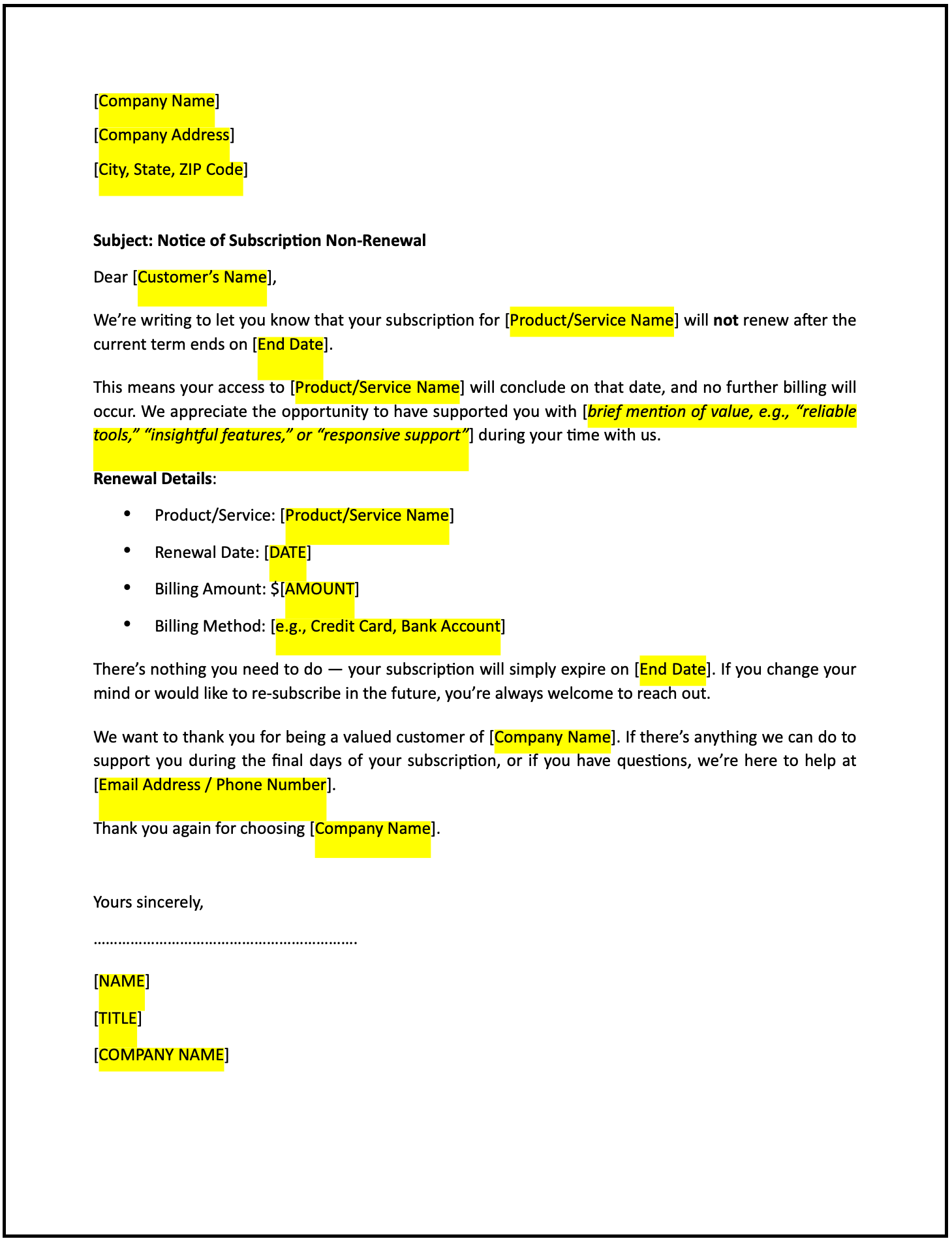Letter of changes to IT policies and procedures: Free template

Letter of changes to IT policies and procedures
A letter of changes to IT policies and procedures is a formal communication used to inform employees or stakeholders about updates or revisions to the organization’s IT protocols. This letter outlines the reasons for the changes, key updates, and instructions for compliance to ensure transparency and smooth implementation.
How to use this letter of changes to IT policies and procedures
- Open with an introduction: Address the recipient respectfully and state the purpose of the letter—to announce changes to IT policies and procedures.
- Provide context: Briefly explain why the updates are necessary, such as aligning with new regulations, enhancing security, or improving efficiency.
- Specify the changes: Clearly outline the specific policies or procedures being updated and highlight key revisions.
- Include the effective date: Provide a clear timeline for when the changes will take effect, ensuring recipients have enough time to prepare.
- Outline compliance expectations: Share instructions on how employees or stakeholders should adhere to the updated policies, such as training sessions or revised workflows.
- Offer support: Reassure recipients that resources or assistance are available to help them understand and implement the changes.
- Maintain a professional tone: Ensure the letter is clear, polite, and supportive.
- Provide contact information: Include details for the recipient to reach out with questions or seek clarification.
Benefits of using a letter of changes to IT policies and procedures
This letter ensures clear and professional communication about IT policy updates while fostering understanding and compliance. Here’s how it helps:
- Promotes transparency: Clearly outlining changes and their reasons builds trust and minimizes confusion.
- Reflects professionalism: A well-crafted letter demonstrates respect and attentiveness to organizational needs.
- Encourages compliance: Providing clear guidance ensures employees or stakeholders can adapt effectively.
- Supports operational efficiency: Updated IT policies and procedures align with evolving organizational goals.
- Enhances security: Informing stakeholders about updates strengthens the organization’s risk management strategies.
Tips for writing an effective letter of changes to IT policies and procedures
- Be specific: Clearly describe the policies or procedures being updated and highlight significant changes.
- Use professional language: Maintain a respectful and supportive tone to encourage understanding and compliance.
- Provide context: Briefly explain the rationale for the updates to build credibility and goodwill.
- Highlight next steps: Include instructions for accessing training, resources, or further documentation.
- Keep it concise: Focus on the key points while ensuring the tone is professional and engaging.
Frequently asked questions (FAQs)
Q: What details should I include in this letter?
A: Include the purpose of the updates, key changes, effective date, and compliance instructions.
Q: Should I personalize the letter?
A: Yes, addressing employees collectively or individually ensures clarity and demonstrates attentiveness.
Q: Who typically sends this letter?
A: IT managers, HR representatives, or organizational leadership typically send this letter.
Q: How formal should this letter be?
A: The tone should be professional yet approachable, focusing on clarity and collaboration.
Q: When should this letter be sent?
A: Send the letter well in advance of the effective date to allow recipients sufficient time to prepare.
Q: Can this letter include links to updated policy documents?
A: Yes, providing links to detailed policies ensures recipients have easy access to the necessary information.
Q: Is acknowledgment from the recipient required?
A: While not mandatory, requesting acknowledgment ensures recipients are aware of and prepared for the updates.
This article contains general legal information and does not contain legal advice. Cobrief is not a law firm or a substitute for an attorney or law firm. The law is complex and changes often. For legal advice, please ask a lawyer.


